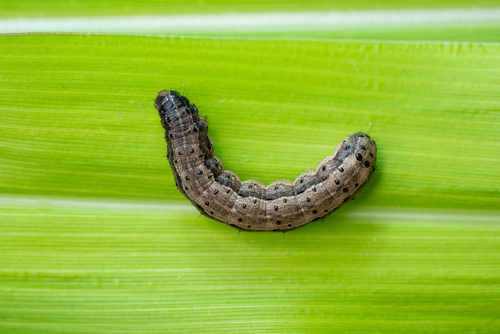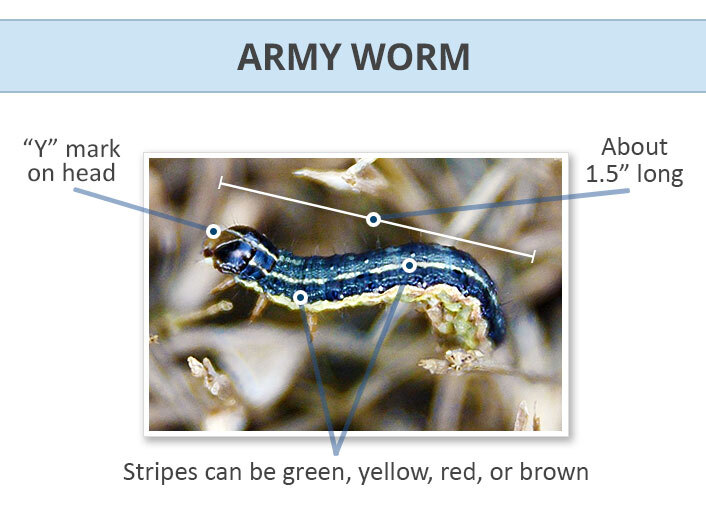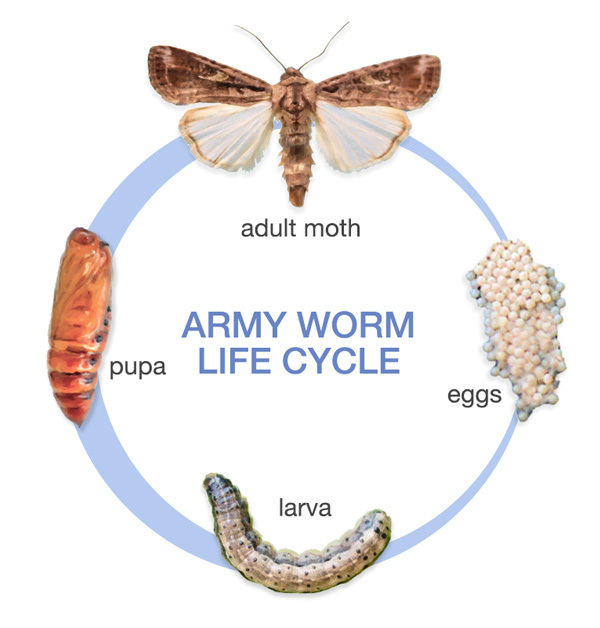
As caterpillars, armyworms are mostly dark brown, black, or green in color, with long stripes of white, orange, brown, or sometimes yellow running the length of their bodies. They have a distinctive upside-down "Y" marking on their head segments that makes them easy to identify.

Common Types of Armyworms
A few different species of distinctively striped caterpillar fall into the armyworm classification. There are visual similarities across the groups, but some types favor different plants for feeding.
- Fall Armyworms - Often considered to be the most destructive to home lawns and golf turfs, fall armyworm damage begins to appear in the late summer or early fall in affected areas.
- Yellowstriped Armyworms - Equally hungry caterpillars who may be more general in their feeding, consuming an even broader range of crops including fruits and flowers.
- Beet Armyworms - These usually green caterpillars are especially fond of fruit crops, and generally less common in the U.S. than fall armyworms.
- True Armyworms - They're usually drawn to weedy grasses for feeding, but true armyworms may damage fruit and vegetable crops as well.
Armyworm larvae (caterpillars) measure about 1.5-2 inches long at their largest. They hatch from small clusters of 50-150 greenish or white colored eggs that can be hidden on the underside of leaves, but are more often found on structures near grassy areas.
Armyworm moths measure around 1.5 inches across the widest part of their wingspan.

Army worms hatch from tiny, circular eggs found in clusters on surfaces near grassy areas. Upon hatching, they will spread through the area by crawling or by spinning silken thread to lower themselves or catch a ride on the wind.
Army worm larvae (caterpillars) progress through 5-6 growth phases called instars. This is also known as molting. Growth from hatchling to full-grown caterpillar will usually take about 10 days in warm weather.
After a feeding rush near the end of their larval phase, the army worm will create a pupa (cocoon) under soil for protection. The pupa will be up to 1.25 inches long, and usually reddish brown to black in color.
Within 1-2 weeks, an adult moth will emerge. They will usually have long antennae and two sets of wings, with the forewings and hindwings often displaying different colors and patterns.
Army worms can be found across much of the United States, but they favor the warm weather of the Southern states. True Armyworms are mostly found east of the Rocky Mountains. First sightings of damage from armyworms are often reported in the southernmost parts of the southeastern U.S.
Can Be Mistaken For
Cutworms are a similar pest that grows through a caterpillar-like larvae phase before transforming into a moth. Cutworms do not display the colorful, lengthwise stripes that make army worms easy to identify.
Next Steps
Click through the rest of our treatment guide to learn about how to inspect for army worms and how to treat your lawn for army worms



